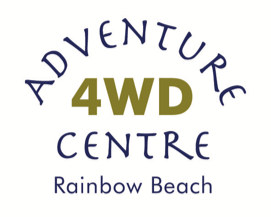Top Tips for beach driving
- VEHICLE ACCESS PERMITS
- Whether driving on Fraser Island or Rainbow Beach vehicle access permits are required. These beaches are gazetted which means Australian road rules apply. Observe road signs and note regular Police patrols (whether 4WD or horseback!).
- TIDAL WINDOWS
- Drive to conditions, where beach driving is recommended during the low tidal window. Tide times are provided by the Bureau of Meteorology and the general rule of thumb is 2.5 hours either side of low tide renders beach access – providing between 5-6 hours daily. Whichever the predominant tide, whether high or low, tide times move forward approximately one hour every day.
- DEFLATED TYRES
- Always check with manufacturer’s recommendations when deflating your tyres. We keep to the general 22 psi on our fleet with off road tyres. Taking a compressor is not a bad idea so that pressure can be varied according to conditions.
- SALTWATER VS FRESHWATER
- Avoid saltwater like the plague. Despite the plethora of pictures, video footage and even off road advertisement! plunging vehicles through saltwater causes irreversible, irreparable damage. Even salt spray up into the engine bay sees the lifespan of your alternator and starter motor shortened by 80%. If anyone is wondering, no you can’t just rinse it off, the damage is done.
- Freshwater isn’t necessarily your friend either. Whatever the flavour, cold water on a hot surface brings about contraction which assists in grease and lubricants being expelled and in turn allowing water to be drawn in. As a consequence components are left unprotected and ultimately fail way before their use-by date. Alternator bearings, A/C bearings and pulley bearings are among the most susceptible.
- SUSPENSION
- Lift kits and raised suspension are definitely worth considering, particularly if wanting to explore off the beaten track on a regular basis. Up to 40mm will not void your manufacturer’s warranty or draw the ire of Department of Transport. It’s easily done and relatively inexpensive.
- RUST PROOFING
- Rust proofing varies in format and application between electronic or chemical barrier. Whichever way you decide, it’s a worthwhile investment if plentiful beach driving is on your agenda. If not, know the flush points of your vehicle!
